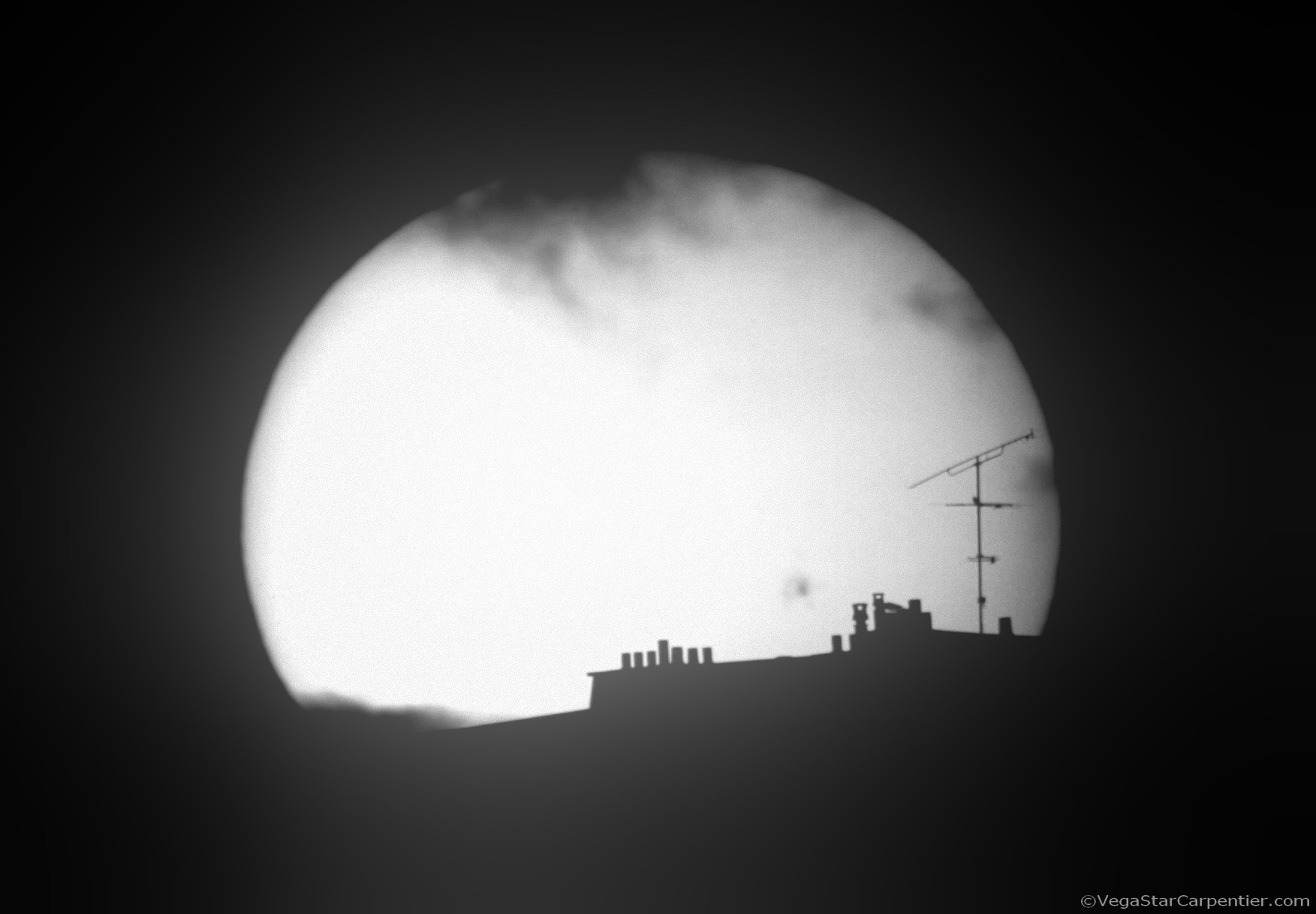
Sunspot AR1476 appears visible to the naked eye in this haunting skywatching image.
Astrophotographer Vegastar Carpentier captured this image of the sun with sunspot AR 1476 visibly rising over a building in Paris on May 13.
This sunspot is 60,000 miles (100,000 kilometers) across in the image and was first detected by NASA's Solar Dynamics Observatory spacecraft on May 5. Its large size led scientists to call it a “monster sunspot.” The sunspot began to unleash a series of powerful solar flares as it moved across the sun.
The sunspot released M-class solar flares with powerful blasts of radiation from the sun. These flares are medium-strength sun storms that can create beautiful northern lights when geomagnetic storm eruptions reach earth. Solar flares are events that release a large amount of energy. This usually happens from sunspots, areas where the sun’s strong magnetic field come to the surface. While M-class flares are not typically dangerous, AR1476 can build stronger X-class flares that may interfere with satellite, communication and infrastructure on our planet.
Editor's note: If you have an amazing skywatching photo you'd like to share for a possible story or image gallery, please contact managing editor Tariq Malik at tmalik@space.com.
Follow SPACE.com for the latest in space science and exploration news on Twitter @Spacedotcom and on Facebook.
Get the Space.com Newsletter
Breaking space news, the latest updates on rocket launches, skywatching events and more!
Join our Space Forums to keep talking space on the latest missions, night sky and more! And if you have a news tip, correction or comment, let us know at: community@space.com.
Nina Sen is a freelance writer and producer who covered night sky photography and astronomy for Space.com. She began writing and producing content for Space.com in 2011 with a focus on story and image production, as well as amazing space photos captured by NASA telescopes and other missions. Her work also includes coverage of amazing images by astrophotographers that showcase the night sky's beauty.









